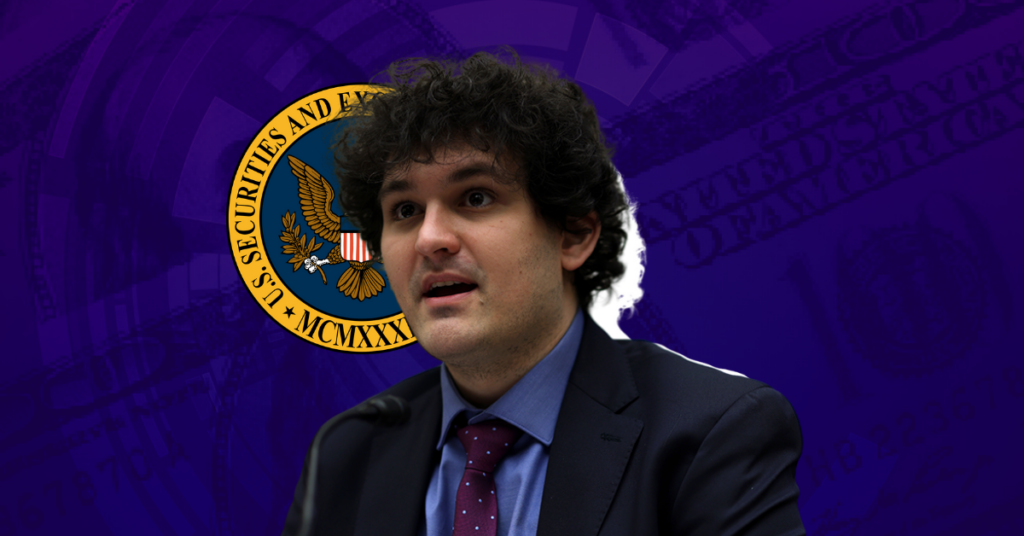Sam Bankman-Fried, once hailed as a visionary in the world of cryptocurrency, embarked on a journey marked by remarkable achievements and devastating setbacks. Born into a family of academics with a penchant for social equity, Bankman-Fried showcased early brilliance in mathematics and later pursued a career in trading after graduating from MIT.
His altruistic inclinations, coupled with a sharp business acumen, propelled him to co-found Alameda Research and subsequently establish FTX, a cryptocurrency exchange that soared to prominence during the COVID-19 pandemic. However, the euphoria surrounding his success soon gave way to turmoil as FTX faced financial troubles and regulatory scrutiny.
Bankman-Fried’s downfall culminated in a high-profile trial and a shocking verdict that sent shockwaves through the crypto community. In this article, we delve into the timeline of Sam Bankman-Fried’s rise and fall, exploring the implications for the world of cryptocurrency and the valuable lessons to be gleaned from his tumultuous journey.
Table of Contents
Early Life and Career of Sam Bankman-Fried
Sam Bankman-Fried’s journey began in the heart of Silicon Valley, where he was raised by parents deeply rooted in academia and social advocacy. Growing up, Bankman-Fried displayed an extraordinary knack for solving math puzzles, foreshadowing his future ventures in the complex world of finance.
After graduating from MIT with a degree in physics, he joined the trading firm Jane Street, where he not only honed his trading skills but also embraced the ethos of effective altruism. His parents’ commitment to social equity instilled in him a desire to use his talents for the betterment of society.
At Jane Street, Bankman-Fried’s philanthropic spirit shone through. He began donating half of his salary to charitable causes. He embodied the principles of evidence-based giving championed by the effective altruism movement. His fusion of mathematical prowess and altruistic values set the stage for his subsequent foray into the burgeoning world of cryptocurrency.
Co-founding Alameda Research in 2017, Bankman-Fried ventured into quantitative trading, swiftly making waves in the cryptocurrency market with his innovative strategies. The success of Alameda Research laid the groundwork for the launch of FTX, Bankman-Fried’s ambitious endeavor to revolutionize the cryptocurrency exchange landscape.
Bankman-Fried’s trajectory from a math prodigy raised in Silicon Valley to a pioneering figure in the crypto industry underscores the convergence of personal passion, academic pedigree, and social consciousness. His journey exemplifies the transformative potential of individuals driven by a desire to effect positive change, yet it also foreshadows the challenges and complexities that lay ahead in the volatile world of cryptocurrency.

Founding of Alameda Research and FTX
In 2017, Sam Bankman-Fried co-founded Alameda Research, marking his entry into the world of cryptocurrency trading. Building on his background in mathematics and trading experience at Jane Street, Bankman-Fried and his team at Alameda Research employed quantitative trading strategies to navigate the volatile crypto markets. Their approach, characterized by data-driven analysis and algorithmic trading, proved highly successful, propelling Alameda Research to the forefront of the industry.
Buoyed by the momentum of Alameda Research’s achievements, Bankman-Fried set his sights on a new venture: FTX. Launched in April 2019, FTX aimed to disrupt the cryptocurrency exchange landscape with its innovative features and user-friendly interface. Bankman-Fried’s vision for FTX extended beyond mere profitability; he sought to create a platform that catered to the diverse needs of traders while advancing the broader goals of financial inclusion and social impact.
As FTX gained traction in the market, Bankman-Fried demonstrated his commitment to innovation through strategic acquisitions. In 2020, FTX acquired Blockfolio, a popular cryptocurrency portfolio tracking app, for $150 million, expanding its reach and enhancing its suite of services. These acquisitions bolstered FTX’s position as a leading player in the cryptocurrency ecosystem, attracting a growing user base and cementing Bankman-Fried’s reputation as a visionary entrepreneur.
Rise of FTX amidst the COVID-19 Pandemic
Amid the upheaval wrought by the COVID-19 pandemic, FTX emerged as a beacon of stability in the cryptocurrency landscape. While traditional markets faltered, the resilience of digital assets and the rise of decentralized finance (DeFi) fueled FTX’s growth. Bankman-Fried’s strategic leadership and adaptability positioned FTX to capitalize on the shifting dynamics of the market, enabling it to thrive amidst the uncertainty.
The acquisition of Blockfolio further enhanced FTX’s offerings, providing users with a comprehensive platform to track their investments and stay informed amid market volatility. FTX’s user-friendly interface and robust security measures resonated with traders seeking a reliable and intuitive trading experience, driving exponential growth in its user base.
Bankman-Fried’s ability to navigate the challenges posed by the pandemic underscored his resilience and strategic foresight. As FTX continued to gain momentum, Bankman-Fried remained steadfast in his commitment to transparency and integrity, laying the groundwork for sustained success in an ever-evolving industry.
However, the euphoria surrounding FTX’s rise would soon give way to uncertainty as the company faced mounting challenges and regulatory scrutiny. Despite the tumultuous road ahead, the rise of FTX during the COVID-19 pandemic stands as a testament to Bankman-Fried’s entrepreneurial acumen and the transformative potential of cryptocurrency in a rapidly changing world.
Financial Downfall of Sam Bankman-Fried
Despite its initial success, FTX faced a series of challenges that ultimately led to its financial downfall. Signs of trouble emerged as Bankman-Fried attempted to salvage failing crypto platforms like BlockFi and Voyager, signaling underlying instability within the company. Moreover, revelations of financial irregularities and regulatory investigations cast a shadow over FTX’s once-promising trajectory.
The liquidity crisis at FTX became increasingly apparent as regulators scrutinized the company’s operations and alleged mishandling of customer funds. Amidst mounting pressure, Bankman-Fried sought to shore up the company’s finances through desperate measures, including attempts to raise billions of dollars overnight to rescue FTX from collapse.
Disappearance of Customer Funds
In a last-ditch effort to stave off financial ruin, Bankman-Fried pursued a high-stakes rescue plan, hoping to secure the necessary funds to stabilize FTX. However, these efforts proved futile as the company’s financial woes continued to escalate.
Amid the chaos, reports emerged of unauthorized transactions and the mysterious disappearance of customer funds totaling billions of dollars. FTX customers were left in limbo as their investments evaporated overnight, compounding the company’s financial woes and eroding trust in its operations.
The disappearance of customer funds sent shockwaves through the cryptocurrency community, highlighting the inherent risks associated with unregulated exchanges and the need for greater transparency and accountability. Investors were left grappling with significant losses, underscoring the volatility and uncertainty inherent in the cryptocurrency market.
Despite Bankman-Fried’s assurances and attempts to downplay the severity of the situation, the damage had been done. FTX’s once-sterling reputation lay in tatters as customers and regulators demanded answers and accountability.
The fallout from FTX’s financial downfall reverberated far beyond the confines of the cryptocurrency industry, raising broader questions about the regulation and oversight of digital asset exchanges. The incident served as a cautionary tale for investors and underscored the importance of due diligence and risk management in navigating the unpredictable world of cryptocurrencies.
As the dust settled, Bankman-Fried found himself at the center of a maelstrom of legal and regulatory scrutiny, facing allegations of fraud and conspiracy. The financial downfall of FTX served as a stark reminder of the perils of unchecked ambition and the consequences of financial mismanagement in an increasingly interconnected and volatile marketplace.
The Trial
Following the tumultuous events surrounding FTX’s financial downfall, Sam Bankman-Fried found himself embroiled in a high-profile trial that captivated the cryptocurrency community and beyond. The trial, marked by intense scrutiny and legal wrangling, shed light on the intricate web of fraud and conspiracy that precipitated FTX’s collapse.
Throughout the proceedings, prosecutors painted a damning portrait of Bankman-Fried as the mastermind behind a brazen scheme to defraud customers and enrich himself at their expense. Allegations of unauthorized transactions, misappropriation of funds, and deliberate deception formed the crux of the prosecution’s case, painting a picture of corporate malfeasance and financial impropriety.
Bankman-Fried, for his part, vehemently denied the accusations leveled against him, insisting that any financial irregularities were the result of mismanagement or unforeseen circumstances rather than deliberate wrongdoing. Despite his protests of innocence, the weight of the evidence presented by the prosecution proved damning, leaving little roo for doubt in the minds of jurors.
The trial proceedings were marked by tense exchanges and dramatic revelations, as witnesses took the stand to testify against Bankman-Fried and his co-defendants. The courtroom atmosphere was charged with emotion as victims recounted the devastation wrought by FTX’s collapse, underscoring the human toll of corporate greed and malfeasance.
The Sentence of Sam Bankman-Fried
In a dramatic conclusion to the trial, Sam Bankman-Fried was sentenced to 25 years in prison for his role in orchestrating FTX’s downfall. The sentence, handed down by Judge Lewis Kaplan, sent shockwaves through the cryptocurrency community and served as a sobering reminder of the consequences of financial misconduct.
Judge Kaplan, in delivering the sentence, minced no words in his condemnation of Bankman-Fried’s actions, describing them as “terrible crimes” that warranted severe punishment. The judge expressed concern about the risk posed by Bankman-Fried’s continued presence in society, highlighting the need to protect the public from further harm.
Bankman-Fried, for his part, maintained a stoic demeanor throughout the sentencing proceedings, offering little in the way of remorse or contrition. His lack of accountability only served to further alienate him from the court and the public, reinforcing the perception of him as a callous and unrepentant criminal.
As Bankman-Fried was led away to begin serving his sentence, the gravity of his crimes weighed heavily on those left behind. The sentencing served as a cautionary tale for aspiring entrepreneurs and investors, highlighting the perils of unchecked ambition and the importance of ethical conduct in business.
In the aftermath of the trial, questions lingered about the broader implications of Bankman-Fried’s downfall and the future of the cryptocurrency industry. As investors and regulators alike grappled with the fallout, one thing remained clear: the era of unchecked greed and financial misconduct was over, and those who sought to flout the rules would be held to account.
Implications for the Crypto World
The downfall of Sam Bankman-Fried and the collapse of FTX sent shockwaves through the cryptocurrency world, prompting widespread reflection on the broader implications for the industry. The episode underscored the inherent risks and vulnerabilities of decentralized finance and highlighted the need for greater transparency and accountability in the burgeoning crypto ecosystem.
One of the key lessons gleaned from Sam Bankman-Fried’s downfall is the importance of regulatory oversight and compliance in safeguarding investors and maintaining market integrity. The lack of effective regulation allowed unchecked misconduct to flourish, leading to devastating consequences for investors and stakeholders alike. Moving forward, regulators are likely to scrutinize cryptocurrency exchanges more closely, imposing stricter regulations to prevent similar incidents from occurring in the future.
Moreover, the FTX debacle served as a wake-up call for investors, highlighting the importance of due diligence and risk management in navigating the volatile crypto landscape. The incident exposed the fragility of trust in unregulated exchanges and underscored the need for investors to exercise caution when engaging in cryptocurrency transactions.
On a broader level, Sam Bankman-Fried’s downfall raised questions about the long-term viability of decentralized finance and the role of centralized entities in ensuring market stability. While cryptocurrencies promise to democratize finance and empower individuals, incidents like the FTX collapse highlight the risks inherent in relying solely on decentralized platforms.
Despite the challenges posed by Bankman-Fried’s downfall, the incident also presented an opportunity for introspection and reform within the cryptocurrency community. By learning from past mistakes and implementing robust governance mechanisms, the industry can move forward with greater confidence and resilience, paving the way for sustainable growth and innovation in the years to come.
The implications of Sam Bankman-Fried’s downfall extend far beyond the confines of the cryptocurrency world, serving as a cautionary tale for entrepreneurs, investors, and regulators alike. By addressing the underlying issues that contributed to FTX’s collapse, the industry can chart a path towards greater transparency, accountability, and trust, ensuring a more secure and prosperous future for all stakeholders involved.
Prioritize Transparency
In the volatile world of cryptocurrency, transparency is paramount. Clear and open communication about business practices, financial status, and regulatory compliance fosters trust among investors and users. By maintaining transparency, you establish credibility and reliability, which are crucial for long-term success.
Tip: Regularly update stakeholders on key developments, financial reports, and compliance measures to maintain transparency and build trust.
Exercise Caution with High-Risk Ventures
Cryptocurrency markets are notorious for their volatility and susceptibility to scams and fraudulent schemes. While high-risk ventures may promise lucrative returns, they also pose significant risks. Exercise caution and conduct thorough due diligence before investing in or participating in ventures with high-risk profiles.
Tip: Before committing funds, research the project, team, and technology behind the venture. Look for red flags, such as unrealistic promises or a lack of transparency, and seek advice from trusted sources, such as financial advisors or industry experts, to assess the risks effectively.
Diversify Your Investments
Cryptocurrency markets can be unpredictable, with individual assets experiencing significant fluctuations in value. Diversifying your investments across different cryptocurrencies, assets, and platforms can help mitigate risk and protect your portfolio against market volatility. By spreading your investments, you reduce the impact of adverse events affecting any single asset or platform.
Tip: Allocate your investment portfolio across a variety of cryptocurrencies, including established ones like Bitcoin and Ethereum, as well as promising altcoins. Additionally, consider investing in different asset classes, such as tokens, stocks, or real estate-backed tokens, to further diversify your risk exposure.
Continuous Learning and Adaptation
The cryptocurrency landscape is constantly evolving, with new technologies, market trends, and regulatory developments shaping the industry. To navigate this dynamic environment successfully, it’s essential to stay informed and continuously educate yourself about emerging trends and changes. Embrace a mindset of lifelong learning and adaptability to stay ahead of the curve and make informed decisions.
Tip: Stay updated on cryptocurrency news, research new projects and technologies, and engage with the community through forums, social media, and industry events. Additionally, consider joining cryptocurrency-focused groups or communities where you can share knowledge, exchange insights, and stay abreast of the latest developments in the industry.
The Rise and Fall of FTX
The rise and fall of Sam Bankman-Fried serve as a sobering reminder of the risks and complexities inherent in the world of cryptocurrency. His journey from a math prodigy to a pioneering figure in the industry, followed by his dramatic downfall and subsequent conviction, underscores the need for greater transparency, accountability, and regulatory oversight.
The implications of Bankman-Fried’s downfall reverberate far beyond the cryptocurrency world, sparking broader conversations about the future of decentralized finance and the role of regulation in ensuring market integrity. While the incident has undoubtedly shaken investor confidence, it also presents an opportunity for introspection and reform within the industry.
By learning from past mistakes and implementing robust governance mechanisms, the cryptocurrency community can move forward with renewed resilience and confidence, paving the way for a more transparent, accountable, and sustainable future for all stakeholders involved.
What do you think about the fall of Sam Bankman-Fried? Talk to us in the comments below!



















